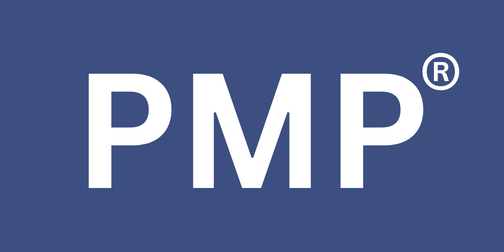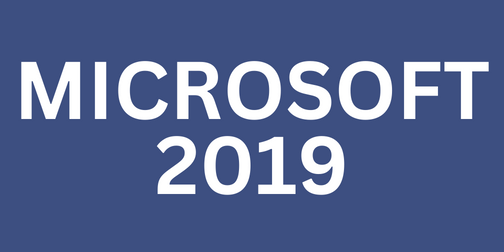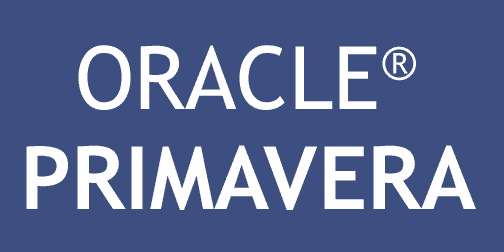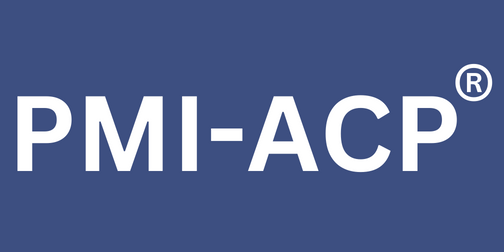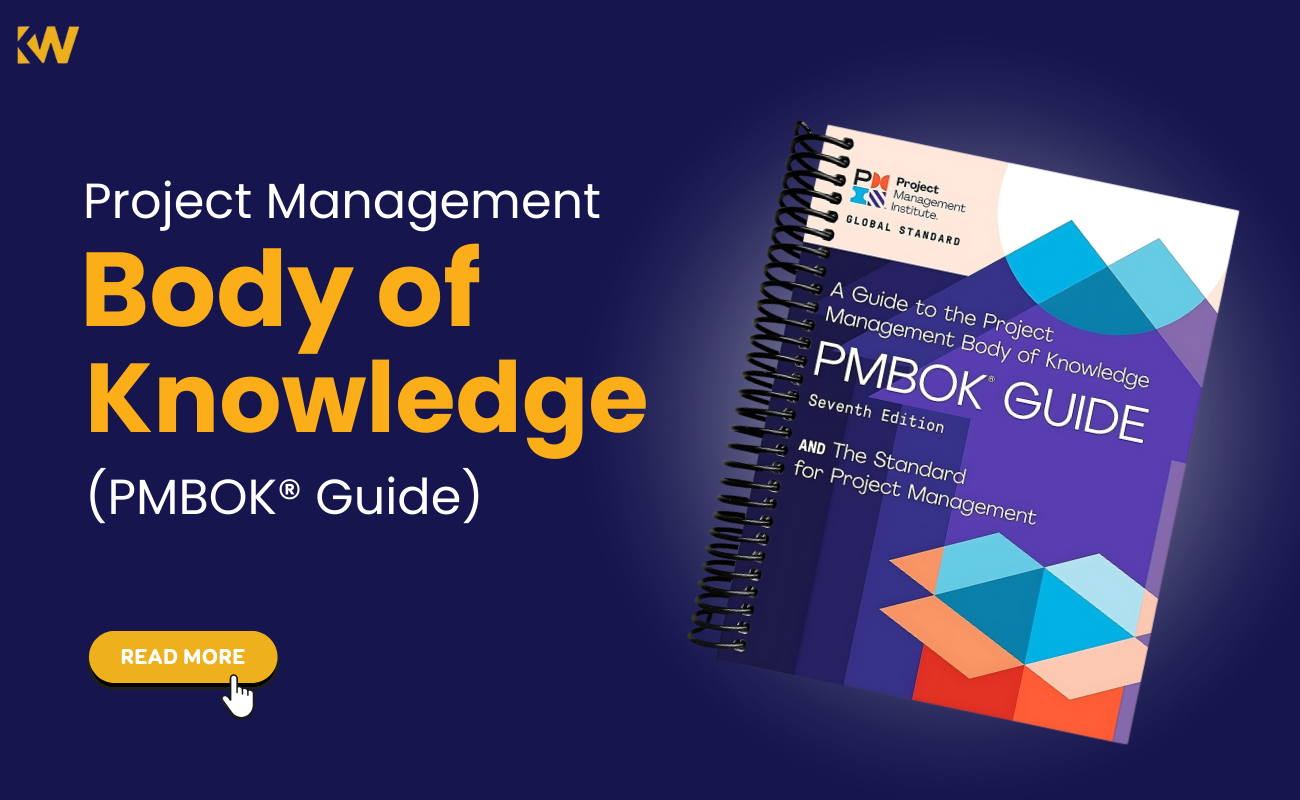
The Project Management Body of Knowledge (PMBOK® Guide)
Posted On May 27, 2024 - 16:49 PM
In today's dynamic business environment, organizations rely heavily on projects to achieve strategic goals, launch new products, and drive innovation. Project management emerges as the critical discipline that ensures these endeavours are completed on time, within budget, and to the required quality standards. It's the art of planning, organising, and leading resources to achieve specific objectives.
Imagine building a house without a blueprint or clear communication between the architect, contractor, and workers. Projects can be equally chaotic without proper management. This is where the Project Management Body of Knowledge (PMBOK® Guide) steps in. Developed by the Project Management Institute (PMI), the PMBOK® Guide serves as a cornerstone resource for project management professionals around the globe.
It is a comprehensive guidebook outlining best practices, standardized terminology, and proven methodologies. By familiarizing themselves with the PMBOK® Guide, project managers gain a significant advantage:
-
Increased Success Rates: The PMBOK® Guide equips you with the tools and knowledge to navigate project complexities, identify potential pitfalls, and ultimately deliver successful outcomes.
-
Enhanced Communication & Collaboration: A common language and shared understanding of project management processes fostered by the PMBOK® Guide lead to smoother communication and collaboration within project teams.
-
Boosted Efficiency & Productivity: By following structured frameworks and best practices, project managers can optimize resource allocation, streamline workflows, and achieve greater efficiency throughout the project lifecycle.
-
Stronger Career Prospects: Demonstrating familiarity with the PMBOK® Guide positions project managers as competent professionals and strengthens their resumes, especially for those seeking PMI certifications like the PMP.
This blog serves as your comprehensive guide to the PMBOK® Guide. We'll delve into its core components, explore its practical applications, and establish its connection to project management certifications. By the end, you'll gain a solid understanding of this invaluable resource and how it can empower you to excel in project management.
Demystifying the PMBOK® Guide: A Project Manager's Ally
The Project Management Body of Knowledge (PMBOK® Guide) is a globally recognized publication developed and maintained by the Project Management Institute (PMI), the world's leading professional association for project management.
Think of it as an encyclopedia of project management knowledge. It serves as a comprehensive reference guide that compiles best practices, proven methodologies, and standardized terminology for the profession. This established body of knowledge equips project managers with the tools and frameworks needed to effectively plan, execute, and control projects across various industries.
The latest edition, the PMBOK® Guide – Seventh Edition, was released in 2021. This edition reflects the evolving nature of project management and incorporates key updates, including:
Increased Focus on Performance Domains: The guide places greater emphasis on the eight project performance domains (Cost, Schedule, Scope, etc.), ensuring a holistic approach to project success.
Agility Integration: Recognizing the growing popularity of agile methodologies, the PMBOK® Guide integrates agile principles and practices within the traditional project management framework.
Tailoring Project Management: The new edition emphasizes the importance of tailoring the PMBOK® Guide's principles to specific project contexts, promoting flexibility and adaptability.
The PMI Talent Triangle is a valuable framework that outlines the key skills and knowledge areas required for successful project management. It encompasses three core aspects: Technical Skills, Leadership Skills, and Strategic Business Management. The PMBOK® Guide directly aligns with the Talent Triangle, providing a strong foundation in technical project management practices that complement leadership and strategic business skills. By understanding the PMBOK® Guide, project managers build a strong technical foundation upon which they can develop the well-rounded skillset outlined in the Talent Triangle.
Key Components of the PMBOK® Guide: A Deep Dive
The PMBOK® Guide offers a robust framework for project management, encompassing three key components: 12 Principles, Project Performance Domains, and Project Management Processes. Understanding these components empowers project managers to navigate complexities and deliver successful projects.
12 Principles of Project Management:
The PMBOK® Guide outlines 12 core principles that serve as guiding lights for effective project management. Let's explore some of these principles with real-world examples:
-
Stewardship: Upholding responsibility for the project's success. Example: A project manager proactively identifies potential risks and implements mitigation strategies, demonstrating responsible stewardship.
-
Focus on Value: Delivering projects that create value for stakeholders. Example: A software development team prioritizes features that deliver the most value to users, ensuring the project aligns with business goals.
-
Teamwork: Fostering collaboration and shared responsibility within the project team. Example: A project manager utilizes team meetings and communication tools to ensure everyone is aligned on project goals and contributes effectively.
-
Adaptability: Responding to change in a timely and effective manner. Example: During a website development project, the client requests additional functionalities. The project manager adapts the schedule and assigns resources to accommodate the change without compromising quality.
These are just a few examples. By understanding and applying all 12 principles, project managers can create a solid foundation for successful project execution.
Project Performance Domains:
The PMBOK® Guide identifies eight critical project performance domains that influence project success:
-
Project Scope: Defines the project boundaries and deliverables. (Ensuring all necessary features are included while avoiding scope creep)
-
Project Schedule: Manages the project timeline and ensures timely completion. (Creating a realistic project schedule and monitoring progress)
-
Project Cost: Manages project finances and ensures budget adherence. (Developing a cost baseline and tracking expenditures)
-
Project Quality: Ensures the project meets the required quality standards. (Implementing quality control measures and conducting thorough testing)
-
Project Resources: Manages human resources, materials, and equipment required for the project. (Assigning the right people with the necessary skills to tasks)
-
Project Procurement: Acquiring goods and services needed for the project. (Negotiating contracts with vendors and ensuring timely delivery of materials)
-
Project Communications: Manages communication flow among stakeholders. (Organizing regular meetings, utilizing communication tools, and maintaining transparency)
-
Project Stakeholder Management: Identifies, analyzes, and manages stakeholder expectations. (Engaging stakeholders throughout the project lifecycle and addressing their concerns)
These domains are interconnected. For instance, effective project scope management directly impacts project schedule and cost. By managing all eight domains effectively, project managers increase the likelihood of project success.
Project Management Processes:
The PMBOK® Guide outlines five process groups that define the lifecycle of a project:
-
Initiating: Defines and authorizes the project. (Developing a project charter, securing funding, and identifying key stakeholders)
-
Planning: Defines the project scope, schedule, budget, and resources. (Creating a work breakdown structure, developing a project schedule, and estimating costs)
-
Executing: Carries out the project plan. (Assigning tasks, managing resources, and monitoring progress)
-
Monitoring & Controlling: Tracks progress, identifies deviations from the plan and takes corrective actions. (Conducting performance reviews, identifying risks and issues, and implementing corrective measures)
-
Closing: Formalizes the completion of the project. (Handing over deliverables to stakeholders, finalizing documentation, and conducting project closure activities)
Each process group consists of specific processes. For example, the Planning process group includes processes like Developing a Project Management Plan, Define Scope, and Creating WBS (Work Breakdown Structure). Understanding these processes and their sequence empowers project managers to effectively manage projects from initiation to closure.
By delving deeper into these 12 principles, eight performance domains, and five process groups, you'll gain a comprehensive understanding of the PMBOK® Guide's framework for successful project management.
Putting the PMBOK® Guide into Action: A Practical Guide
The PMBOK® Guide's strength lies in its adaptability. While it offers a comprehensive framework, it's crucial to understand that one size does not fit all.
Tailoring the PMBOK® Guide:
-
Project Needs Assessment: The first step is to understand your specific project context. Consider factors like project size, complexity, industry, and methodology (waterfall, agile, hybrid).
-
Adapting Best Practices: Don't feel obligated to implement every process or technique outlined in the PMBOK® Guide. Select the elements most relevant to your project needs and tailor them to your specific situation.
-
Process Selection: For example, a small website development project using an agile approach might require a lighter touch on planning processes compared to a large-scale construction project following a waterfall methodology.
Integration with Project Management Tools:
The PMBOK® Guide isn't a replacement for project management software. It serves as a complementary resource. By understanding the PMBOK® Guide principles and processes, you can leverage project management tools more effectively:
-
Informed Tool Selection: Knowing the PMBOK® Guide framework allows you to choose software that best aligns with your project needs and the processes you intend to implement.
-
Process Optimization: Understanding the PMBOK® Guide processes allows you to configure project management tools to automate specific tasks, track progress against baselines, and facilitate communication.
Benefits for Project Management Teams:
The PMBOK® Guide fosters a common language and understanding within project teams, leading to several benefits:
-
Improved Communication: Standardized terminology eliminates confusion and ensures everyone is on the same page regarding project concepts and processes.
-
Enhanced Collaboration: A shared understanding of the PMBOK® Guide principles facilitates smoother collaboration and teamwork. Team members can anticipate each other's needs and work towards a common goal more effectively.
-
Reduced Conflict: Standardized processes and clear expectations minimize misunderstandings that can lead to conflict within the team.
By embracing the PMBOK® Guide principles and tailoring them to specific project needs, project managers can leverage its framework to achieve project success and empower their teams for better collaboration and communication.
PMBOK® Guide: Gateway to Project Management Certifications
The PMBOK® Guide serves as a cornerstone resource for project management certifications, particularly the coveted Certified Project Management Professional (PMP) certification. Offered by PMI, the PMP certification validates a project manager's competency and adherence to globally recognized best practices.
Why is the PMBOK® Guide so crucial for PMP aspirants? The PMP exam heavily draws upon the knowledge and processes outlined in the PMBOK® Guide. Familiarity with the guide's principles, performance domains, and processes equips you with a strong foundation to tackle the exam content.
But the PMBOK® Guide's value extends beyond the PMP. PMI offers a range of project management certifications catering to different experience levels and specializations. These certifications, such as the PMI Agile Certified Practitioner (PMI-ACP) or PMI Scheduling Professional (PMI-SP), also have a strong connection to the PMBOK® Guide. Understanding the core principles outlined in the guide provides a solid base for pursuing these specialized certifications as well.
By mastering the PMBOK® Guide, you invest in your project management expertise and unlock doors to diverse career opportunities in the ever-evolving project management landscape.
Conclusion
This blog has explored the PMBOK® Guide, a cornerstone resource for project management professionals. We've delved into its key components, practical applications, and connection to project management certifications.
Remember, the PMBOK® Guide empowers you with:
-
Structured Framework: A comprehensive framework for planning, executing, and controlling projects.
-
Best Practices & Standardized Terminology: A foundation of best practices and a common language for effective communication and collaboration.
-
Adaptability: The ability to tailor the PMBOK® Guide principles to your specific project needs and methodologies.
This valuable guide serves as a stepping stone to success in the world of project management.
Don't stop here. The PMBOK® Guide offers a wealth of in-depth knowledge waiting to be explored. Consider investing in the official PMBOK® Guide or seeking additional resources to delve deeper.
Ready to take your project management skills to the next level? Knowledgewoods offers a comprehensive range of project management training courses designed to equip you with the practical skills and knowledge needed to excel in your projects. Explore our course offerings today and unlock your full potential as a project manager.
Check out this blog : 5 Essential phases of project management












